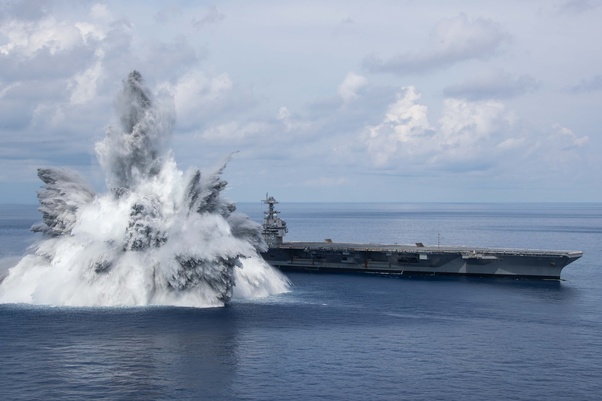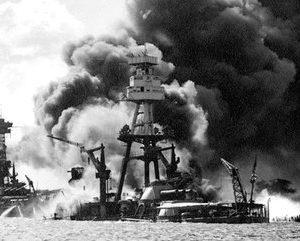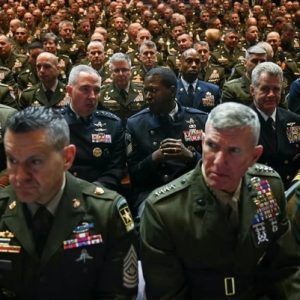Currently, the USN has 9 carriers active. I am considering only carriers that are in a deployment schedule. Carriers in rework, i.e. refueling or major maintenance, are not capable of deployment will not be considered for the purpose of my answer. 6 carriers are deployed or capable of being deployed. No other aircraft carrier, other than other the 3 active, that is in some level of rework, are capable of deploying. Two of the 3 might be possible to prepare to deploy, but likely only to replace the one sent to replace the one sunk. They both would require airwings, and workup assignments that would likely take a few months. Now, Those carriers, that have been removed from service, regardless of when they were removed, are not capable of deploying for over a year, some would even take several years. The three in deep overhaul would likely be available before any carrier that has been removed from the active rolls could be activated.
The U S does not have the industrial base to accomplish the refitting and activation of those non-active carriers.
So, how quickly could that aircraft carrier be replaced?
First, we must assume the one that was lost was one of the deployed carriers. That means to immediately replace it, the replacement would likely be one of the other two currently in a deployed status. Depending on where they were located, it could be from 2 to 4 weeks. A USN Carrier can sustain speed of approximately 35 MPH, that probably equates to about 700–750 miles in a 24-hour period. In 2 weeks, that’s about 5000–6000 miles, depending on the route they had to take.
The other three active carriers, are in the states, and undergoing workups. Even If an airwing was onboard, The battle group would have to be formed, and supplied, this is likely to be at least a 2 – 4 week process, if not more. So, unless one of them is currently ready to deploy, we would have to add time to the 2–4 week transit time. I don’t believe the location, east or west coast location, would change the deployment time by more than a couple of days.
I’m saying 2 weeks at best, and 2 months as the worse case scenario for active carriers. Impossible to guess for any non-active carrier.
But all is not lost, that’s why we have a DOD. The Air Force, Army, USMC, and yes even the Coast Guard could provide assets that could negate the lost of a Carrier for several months. That is the concept of “All Hands on Deck”, or “Next Man Up”. They have our back, just as we have theirs.
1.) If a carrier gets destroyed, the NNAVY could send another carrier within days but definitely within one or 2 month time depending on the location and readiness state of the rest of the fleet.
2.) If „replacing“ means building a new one to replace the destroyed one, then we talk 10–15 years IF AT ALL! The US has a very small ship building industry for the countries size of economy and NAVY. There are also basically zero reserves in production capabilities and ZERO reserves to build a carrier wich was not part of the fleet plan for at least a decade already. The NAVY is additionally banned from buying most ship types abroad.
Not a carrier under attack, but USS Gerald R. Ford (CVN 78) enduring it’s last massive explosive event to complete Full Ship Shock Trials in 2021:

- The US NAVY really needs to boost US ship building capabilities (with South Korean help) and buy European, Korean and Japanese ships, but is banned from buying them to protect US ship yards wich van’t deliver because of disastrous politics since 1991.
- South Korea’s DEAWOO and Hyundai have excellent military ships and supplies the US with know how. Korea also helps the US to build up it’s ship building industry, because they have superior industrial knowledge due to their huge commercial and considerably big military ship industry.
- The US protects a few military shipyards, but destroyed almost all civilian ship yards due to globalization, but these civilian yards are actually extremely important to have spare capacity to quickly build tons of military ships. Makes sense?
- South Korea was also recently awarded a contract to overhaul and repair USN ships wich is the first such foreign contract ever signed by the USN.






